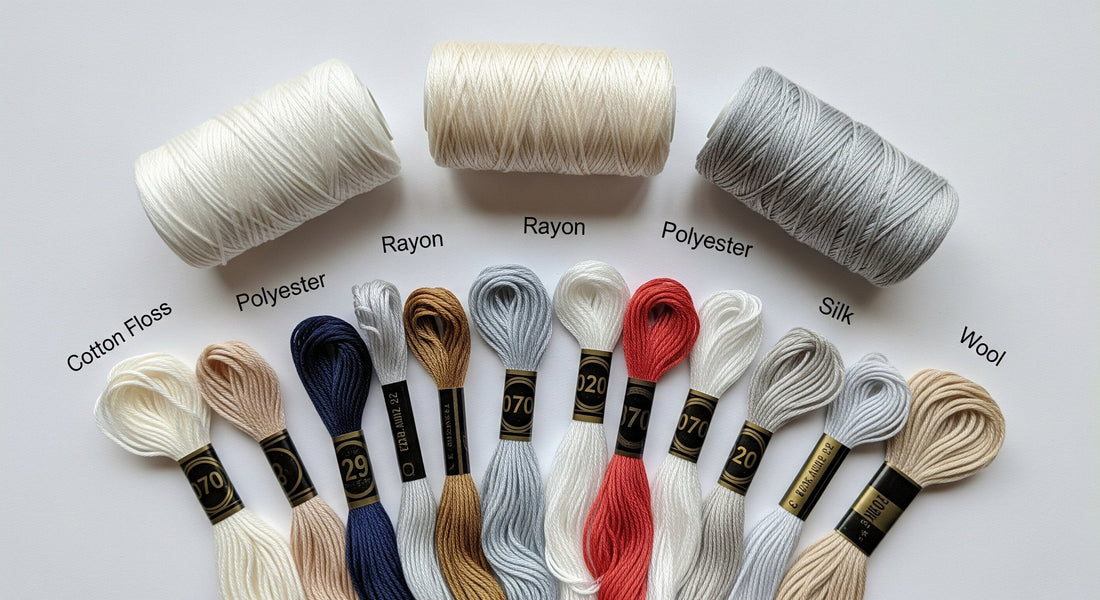
Understanding Thread Types & Weights
Share
Choosing the Right Thread for Texture, Durability, and Stitch Quality
Threads are more than just color—they’re the backbone of your embroidery’s texture, finish, and longevity. Different threads behave differently depending on the technique (hand vs. machine), the fabric, and the desired look. In this article, we’ll explore common thread types and weights, and when to use each.

1. Common Embroidery Thread Types
Cotton Floss
· Made of 6 divisible strands
· Soft, matte finish
· Ideal for hand embroidery
· Brands: DMC, Anchor
Rayon Thread
· High sheen and vibrant color
· Slippery and delicate
· Great for machine embroidery or decorative accents
Polyester Thread
· Durable, colorfast, and strong
· Slight sheen
· Ideal for machine embroidery and garments
Silk Thread
· Luxurious, smooth texture
· Soft sheen
· Best for fine detail and special projects
Wool/Perle Cotton
· Heavier texture, twisted
· Not divisible
· Adds raised texture; used in crewel or folk embroidery
2. Understanding Thread Weight
Thread weight refers to the thickness of the thread. However, the numbering system can be confusing, as lower numbers mean thicker threads.
|
Weight |
Description |
Common Use |
|
12 wt |
Very thick |
Bold accents, topstitching |
|
30 wt |
Medium thickness |
Textured fill, detail stitching |
|
40 wt |
Standard machine embroidery |
Everyday embroidery |
|
50 wt |
Fine thread |
Quilting, thin designs |
For hand embroidery, floss strands act as a weight control—use more or fewer strands depending on desired thickness.

1. Matching Thread to Project
|
Project Type |
Recommended Thread Type |
|
Heirloom hand embroidery |
Cotton floss or silk |
|
Machine embroidery logo |
Polyester 40 wt |
|
Children’s clothes |
Polyester (durable, washable) |
|
Textured designs |
Wool or Perle Cotton |
|
High-sheen art pieces |
Rayon or silk |
4. Specialty Threads
· Glow-in-the-dark threads – Fun for kids’ designs
· Metallic threads – Add sparkle but require slow stitching
· Variegated threads – Color shifts within one spool
Tip: Specialty threads may require special needles or reduced tension on machines.
Final Thoughts
Choosing the right thread type and weight helps you balance beauty and function. Always test unfamiliar threads on scrap fabric before stitching your full project, and keep thread charts nearby for consistency.